
BY THE TIME NEWLY MINTED U.S. fighter pilots entered WW II in late 1941, they faced a Japanese adversary whose pilots had been flying combat since 1937. Not only were these "flying Samurai" pilots old hats, but they also flew a trump card in the form of the Zero. As the rays of the Rising Sun extended over the vastness of the South Pacific, the two things that stood in their way of reaching the Australian shores was a jumping-off point near the southern tip of New Guinea and the untested, untrained and out-gunned fighter pilots of the Army Air Corps. Follow along as a farm boy turned fighter pilot slugs it out with the Japanese in a life-and-death struggle to hold New Guinea at all costs.
Rough, tough and ready?
December 6, 1941, was a day I would never forget. After months and months of enduring the various rants and complaints of my Army Air Corps instructors, most of whom had shouted at me from the backseats of PT-17s, BT-14s and AT-6s, I turned the tables on them as silver wings were pinned to my chest. A brand-new second lieutenant, I carried a set of papers that proclaimed I was to be sent to Selfridge Field in Michigan to learn how to fly fighters. Less than a day later, my whole world, along with everyone else's, was turned upside down.
We received word that the Japanese had bombed a place called Pearl Harbor; I thought it was up near Alaska. What did I know I was just a farm kid from Wisconsin. I realized it was serious when they told us to report back to base, and I knew these were desperate times when they sent me to Florida to learn how to fly P-40s with the 49th Fighter Group.
But by Christmas of 1941, having yet to sit in a P-40 let alone fly one, our airplanes were created, and we were told we were being sent to California for deployment to a combat area; the military could not afford to wait to train us while the Japanese were ravaging the Pacific.
Denne historien er fra November - December 2022-utgaven av Flight Journal.
Start din 7-dagers gratis prøveperiode på Magzter GOLD for å få tilgang til tusenvis av utvalgte premiumhistorier og 9000+ magasiner og aviser.
Allerede abonnent ? Logg på
Denne historien er fra November - December 2022-utgaven av Flight Journal.
Start din 7-dagers gratis prøveperiode på Magzter GOLD for å få tilgang til tusenvis av utvalgte premiumhistorier og 9000+ magasiner og aviser.
Allerede abonnent? Logg på

Keeping 'em Flying!- The new generation of warbird pilots, restorers and mechanics
The new generation of warbird pilots, restorers and mechanics. Nearly 80 years after the end of World War II, the fighters, bombers, and trainers that defended freedom continue to enthrall and inspire audiences at airshows, thanks to generations of warbird pilots, maintainers, restoration specialists and collectors. In our September, 2022 issue we introduced you to the young warbird pilots, maintainers and restorers who are already beginning to displace more "experienced" warbird fliers and fixers.

The Corsair Maker- Bringing the Vought Corsair to the fleet was a daunting challenge that spanned nearly three years.
When the first production Corsairs exited the Stratford factory in June 1942, Guyton, as seen here, was tapped to manage the flight and production test program. Armament was improved to six wing-mounted .50s, displacing the wing fuel tanks now placed forward of the cockpit which necessarily was moved rearward by 32 inches. Overall length was increased, armor plate added, landing, arresting and tail gear improved, aileron control enhanced, and a new version of the R2800 engine was incorporated. But those significant improvements unearthed numerous idiosyncrasies that would take an extended period to make the Corsair acceptable for carrier operations
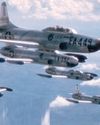
STARFIRES Over Korea
F-94 pilots tangle with MiGs
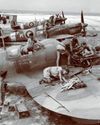
Training Mission
BY THE TIME THIS TRAINING SCENE WAS RECORDED in Canne, Italy, in July 1944, Allied Yugoslavian airmen had several years of experience working side by side with the RAF.
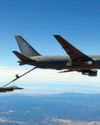
KC-46A PEGASUS
Next generation aerial refueler
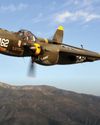
"SATAN'S ANGELS" ACE - Tales from a P-38 pilot in the South Pacific
\"AS A KID GROWING UP on the bow of my father's tugboat, hauling oil from Seattle to Alaska, I had a lot of time on my hands.
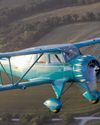
WACO YKC - Stunning and Ultra Rare Golden Age Cabin Flier
BETWEEN THE IMPLEMENTATION of the Air Commerce Act of 1926 and December 31, 1948, all U.S. registered flying machines sported an N-number, much as they do today, the \"N\" being an internationally recognized identifier for the United States. During that period, however, an additional letter-identifier followed the \"N.\" Depending on their category, they were registered in the NC (Commercial), NG (Glider), NL (Limited), NR (Restricted, usually meaning race airplanes), NS (State government), and, finally, NX (experimental).
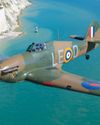
BADER'S HURRICANES
Double amputee fighter ace Douglas Bader and his Battle of Britain Hurricanes
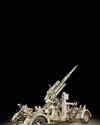
Scourge of the Allied Fighters
IT HAD TO BE THE MOST HELPLESS FEELING in the world: you're at 25,000 feet over Europe knowing that your primary function is to drop bombs-or flying escort for the bombers while being a slow-moving target for some of the world's finest shooters. However, you have John Browning's marvelous .50 caliber invention to give some degree of protection. Unfortunately, you're absolutely helpless against flak. Piloting and gunnery skills play no role in a game where sheer chance makes life and death decisions. For that reason, the Krupp 88 mm Flak 18/36/37 AA cannon could be considered WW II's ultimate stealth fighter. You never saw it coming.
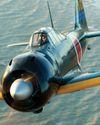
ZERO MYTH, MYSTERY, AND FACT
A test pilot compares the A6M5 Zero to U.S. fighters